Think you need heavy dumbbells or endless gym hours for sculpted arms? Think again.
The truth is, your own body is one of the best tools you have. You don’t need fancy gear or a ton of time to tone your arms right at home. With the right moves and a bit of consistency, you can start seeing results sooner than you think.
If you’re new to this or just not a gym person, this guide is for you. We’ll break it down step-by-step, showing you how simple bodyweight exercises—and everyday stuff like chairs or walls—can help you build strength and shape your arms. And the best part? The most important ingredient is consistency.
Can You Really Tone Your Arms Without Weights?
Absolutely! “Toning” doesn’t mean getting bulky or lifting heavy. It’s about making your muscles more defined and trimming the layer of fat that covers them. That comes from regularly working your muscles with good form and pairing that with healthy habits around food and movement.
Bodyweight training takes into account your body weight and the weight of the earth. Consider such exercises as:
- Push-ups
- Tricep dips
- Planks
They might seem simple, but done slowly and properly, they challenge your arms more than you’d expect. Plus, you can do them anywhere—your bedroom, living room, or balcony. No excuses needed!
Understanding the Arm Muscles You’re Working
It is useful to be aware of which areas you are working on before launching into workouts. Primary muscles that are targeted when toning the arms are:
- Biceps (front of the upper arm)
- Triceps (back of the upper arm)
- Deltoids (shoulder area)
Toning occurs when proper muscles are used and stacked over the low fat. It implies that exercise and good nutrition are two equivalent aspects. Toning does not apply to non-visible areas, and you can only see good results when you cut body fat and retain lean body mass.
Best Bodyweight Arm Exercises You Can Start With
These bodyweight exercises will assist you in starting to work all major muscles of the arms. You do not have to be able to memorize a long list. Several controlled and consistent moves are all it takes to reap the results.
Foundational Arm-Toning Exercises (No Equipment Needed)
-
Diamond Push-ups: Hands close together to really work the triceps.
-
Tricep Dips: Use a chair, fingers behind you, legs out straight. Lower and lift your body using your arms.
-
Wall or Incline Push-ups: Easier than regular push-ups, great for building up strength.
-
Arm Circles: Extend arms out and make small circles—feels easy but really works your shoulders.
-
Plank to Downward Dog: Moving between these two stretches your shoulders and challenges your arms.
-
Reverse Plank Holds: Targets triceps, shoulders, and core.
A Sample No-Equipment Arm Routine
In order to provide structure to your practice, go on a simple 10- or 12-minute arm toning routine as a beginner. This should be repeated three to four times a week in order to produce noticeable changes.
| Exercise | Duration / Reps | Target Area |
|---|---|---|
| Arm Circles | 1 minute (both ways) | Shoulders |
| Wall Push-Ups | 10–15 reps | Chest, Triceps |
| Chair Triceps Dips | 10 reps | Triceps |
| Plank to Downward Dog | 30 seconds | Arms, Shoulders |
| Reverse Plank Hold | 30 seconds hold | Triceps, Core |
| Rest | 30 seconds | — |
| Repeat Circuit 2–3x |
This combination has a full arm emphasis, in addition to the involvement of shoulder and core stability. First-timers can do one round and increase gradually week after week.
How Often Should You Train Arms?
With bodyweight exercises, aim for 3-4 times a week. This gives your muscles time to rest and rebuild. On other days, focus on other parts of your body or take a rest day. And don’t skip sleep — it’s crucial for recovery!
Remember, consistency beats intensity. You don’t need to work out every single day, just keep it regular.
Supporting Toning Through Smart Nutrition
What you eat matters. To support muscle repair and definition:
-
Include lean protein like chicken, fish, tofu, or Greek yogurt.
-
Stay hydrated—drink water throughout the day, not just when thirsty.
-
Cut back on processed snacks, sugary drinks, and too much salt to reduce bloating.
You don’t need to be perfect, just aim for balance.
How To Progress Without Equipment Over Time

As your body becomes used to the exercises you are doing now, they will start to feel easier. That’s good — it means you are improving — but it is also a sign to step up.
Here are simple, clever ways to challenge your muscles without adding weight:
Slow down your reps
Slow, controlled movements increase time under tension, which helps build both definition and strength — no equipment needed.
Increase repetitions or duration
Example: If you were doing 10 chair dips, increase to 15. If a plank held for 30 seconds feels easy, push for 45.
Reduce rest between sets
Instead of resting 30 seconds between moves, rest only 15. This keeps your heart rate high and intensifies the session.
Change the angle
Start with wall push-ups, then progress to inclined push-ups (using a chair), then to standard push-ups. The lower you go, the more of your bodyweight you lift — making it harder.
Keep Things Fresh
Doing the same routine can get boring. Try adding pauses in your reps, or use isometric holds (like holding halfway through a push-up for a few seconds). These little tweaks challenge your muscles in new ways and keep you motivated.
The following table illustrates how progressing gradually with a bodyweight arm workout should be done:
| Week | Focus | Suggested Change |
|---|---|---|
| 1–2 | Form & Basics | 2 rounds of basic circuit, 10–12 reps each |
| 3–4 | Increased Intensity | 3 rounds, reduce rest to 15 sec |
| 5–6 | Time Under Tension | Slow down reps, hold mid-movement for 3 sec |
| 7–8 | Angle Variation | Move to lower incline or floor-level push-ups |
| 9–10 | Hybrid Techniques | Add towel pulls, static holds, water bottle lifts |
Every little step will not require a hustle. Follow your body and continue when you feel good — and do not just follow a calendar blindly.
Weekly Planning For Arm-Toning At Home
Here is a recommended rhythm of the week:
-
Monday: Arm circuit
-
Tuesday: Core or leg day / rest
-
Wednesday: Arm + core combo
-
Thursday: Cardio (walk, dance, jump rope)
-
Friday: Upper body focus
-
Saturday: Stretching or yoga
-
Sunday: Light activity or rest
This type of balance avoids injury and ensures that your motivation does not wear out. Arm toning is a marathon, not a sprint.
What To Avoid When Toning Arms At Home
Minor habits can block major progress. Here are common mistakes that can quietly sabotage your toning efforts:
Skipping warm-ups and cool-downs
A bit of shoulder rolls, arm swings, and light stretches before and after can do wonders for your joints and long-term flexibility.
Rushing through reps
The faster you go, the worse your form. If posture or muscle engagement suffers, you’re moving — but not toning. Always aim for quality over quantity.
Training arms only
While the goal is to tone your arms, full-body movement burns more fat, which helps the muscle definition show more clearly.
Neglecting posture
Whether doing dips, push-ups, or planks, where you place your shoulders and how you align your spine makes a difference. Poor posture can lead to injury and prevent proper muscle activation.
Encouragement To Stay Consistent
Progress might be slow at first, and that’s okay. Strength often comes before visible changes. You might wonder if 10 minutes a day is enough, but small, consistent efforts add up big time.
One day, you’ll notice your arms feeling firmer or your clothes fitting differently. That’s the payoff for showing up regularly.
Summary | Arm Toning Is About More Than Looks
Toning your arms is not just about looks — it’s about building confidence and discipline. You don’t need a gym or fancy equipment. Just your body, a little space, and the belief that every rep counts.
You’ve got this.

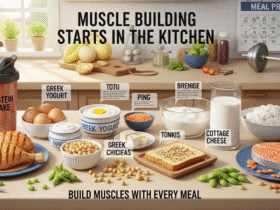



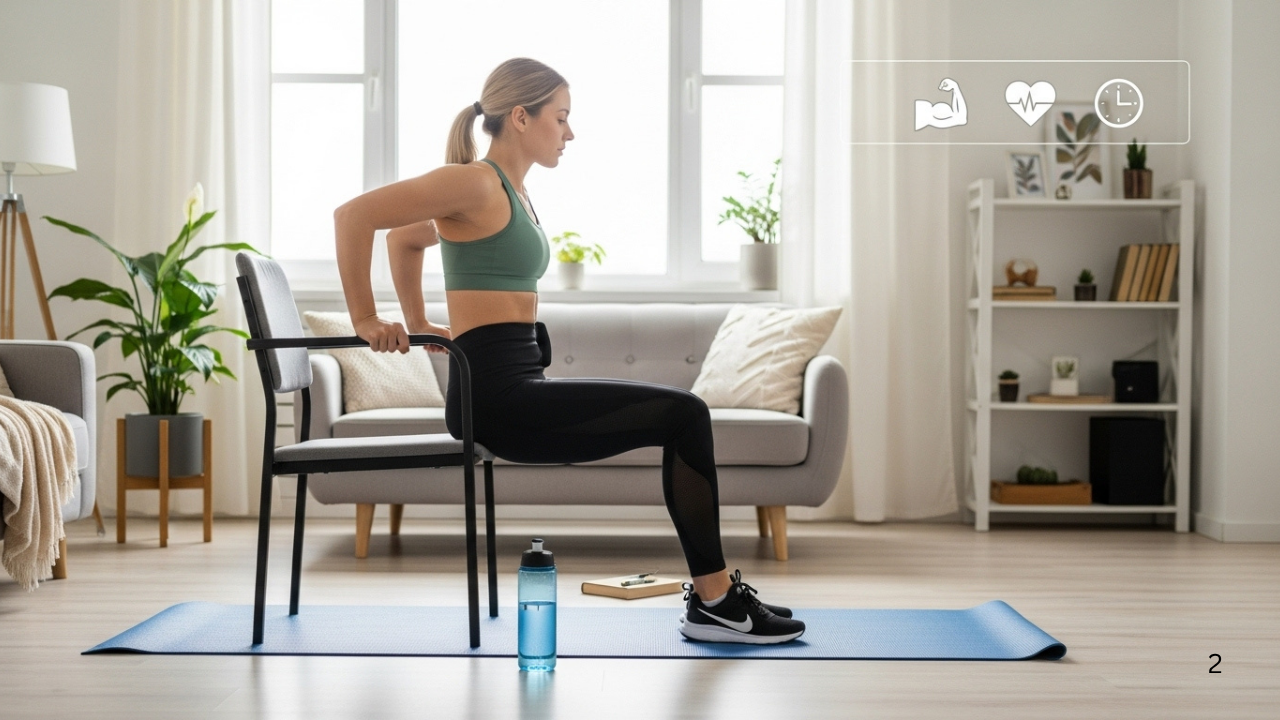

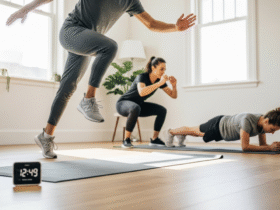



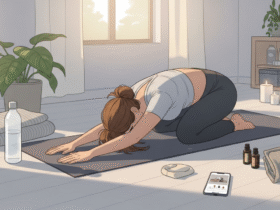
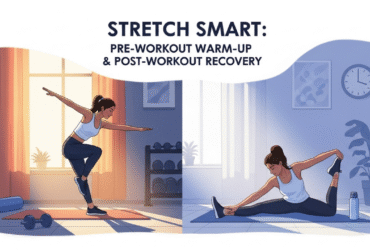
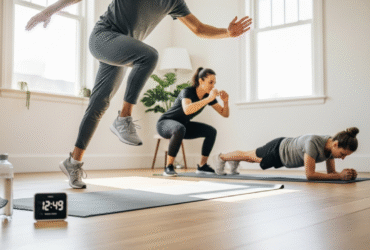

Leave a Reply